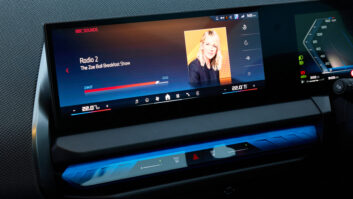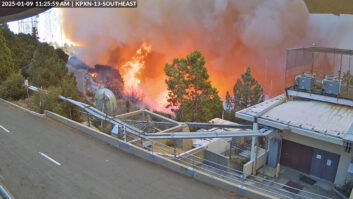Nick Langan has designed a free mobile app for iOS and Android called RadioLand that locates “listenable” FM radio stations from a given location in North America. He developed it for his software engineering masters’ thesis at Villanova University near Philadelphia. I asked him about it.
Radio World: How did this get started?
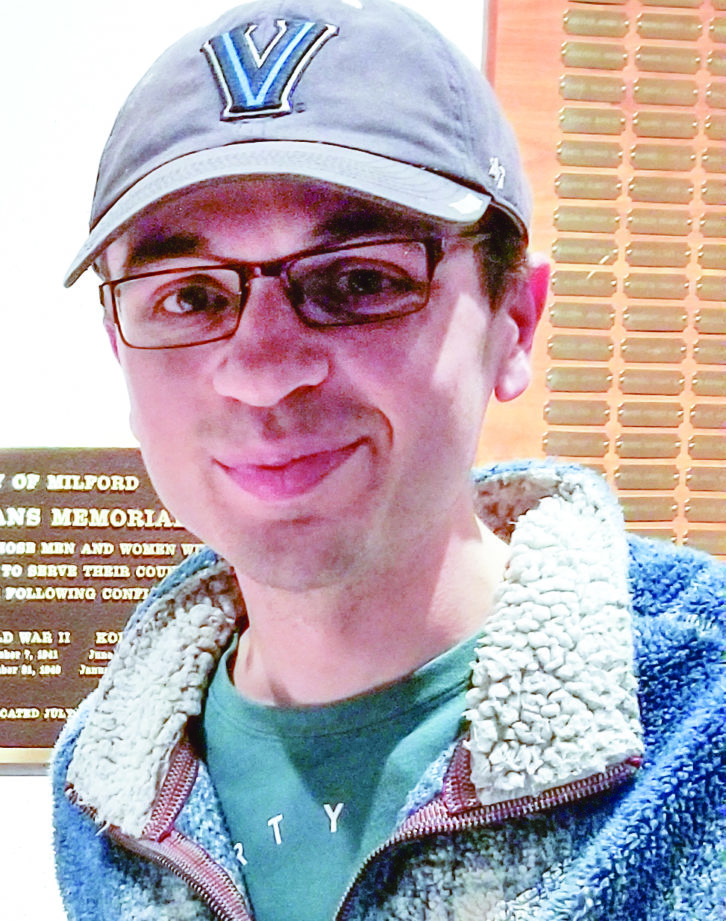
Nick Langan: While I firmly believe this will grow into something bigger, it’s a side venture as I try to find my way into some sort of career in software development. It’s a company of one, though I’ve had plenty of great support.
My love for radio runs deep. I grew up in the ’90s and remember when radio guides were available in book form. There was one written by Jeffrey Dingle, “Essential Radio,” I picked up during a trip to Boston that stuck with me.
I am an avid radio enthusiast. I’ve been an FM DXer for over 15 years and host a podcast on such propagation with Bryce Foster, the VHF DX podcast. I don’t operate on the bands too much but I’m a licensed ham (W2NJL).
I live in the South Jersey Pine Barrens. My responsibilities include being the operations manager at 89.1 WXVU at Villanova University, which recently took over the frequency allocation in the Main Line suburban section of Philadelphia full-time.
With my newfound passion for software development and the chance to create some of my own projects in my Villanova computer science curriculum, I decided that if I ever had the chance to do a longer-term project, it would be a radio location type mobile app.
RW: Describe the app.
Langan: It takes your location, be it anywhere in North America, and delivers an accurate list or map of the FM radio stations you are in reliable listening range of.
There are a few sources that do this online — Radio-Locator for one, a great inspiration for the app — but to my amazement, none that is solely a mobile app. I wanted to research the way I could build this for mobile and at the same time improve upon predictions of FM signal strengths.
With the data we’ve been able to amass, RadioLand handles not just listings in the United States, but Canada, Mexico, Bermuda and the Caribbean, with sights set on Europe next. The list and map of stations receivable for a location can be shared out as a PDF file.
On YouTube you can see a talk I gave about the app at my college’s 3-Minute Thesis competition, which I’m proud to say landed me second place.
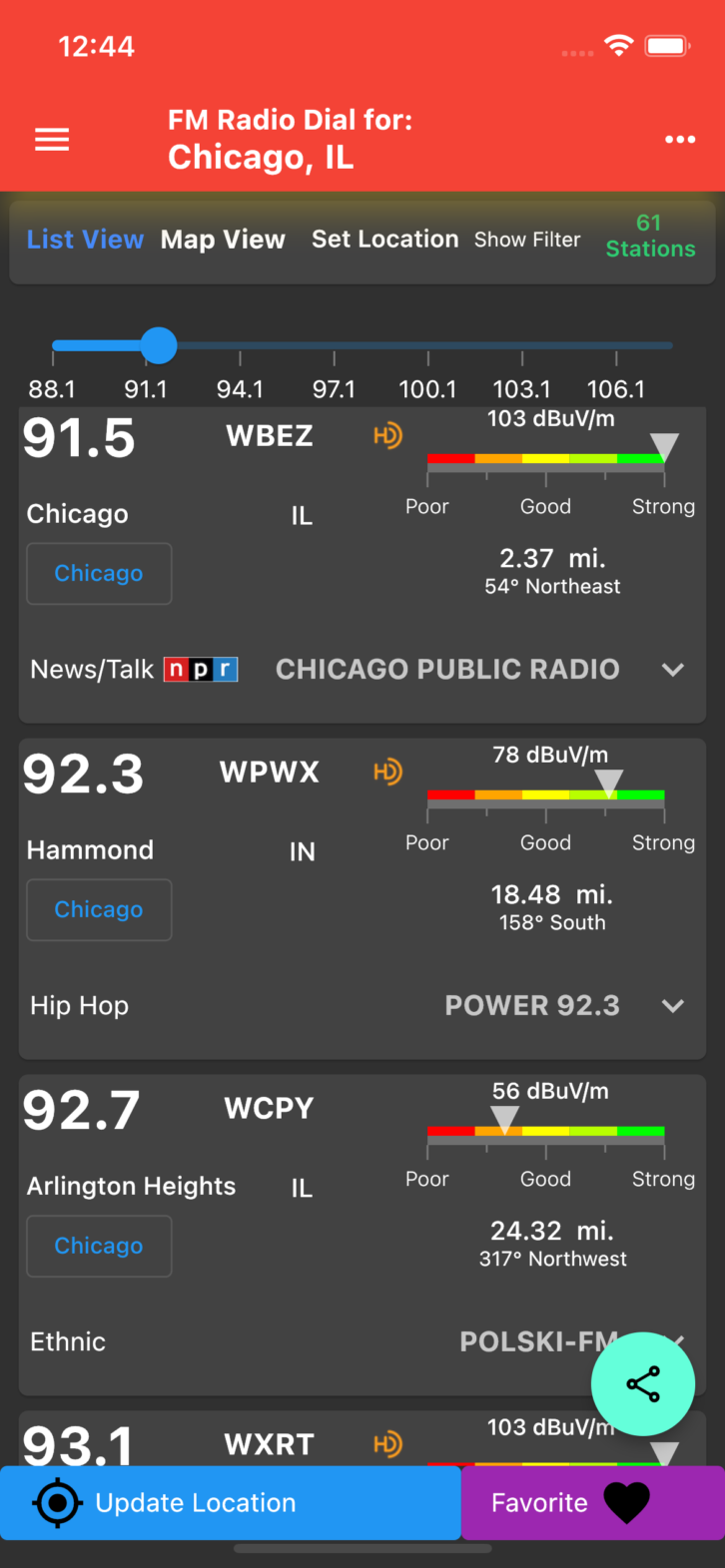
RW: Who is the target user?
Langan: RadioLand naturally leans technical, as it’s a reflection of my interests. So first and foremost would be the radio engineering community. The long-distance FM radio hobbyist also was in mind when I was designing this.
But the traveler on a road trip, tuning around for an NPR affiliate or the home of the St. Louis Cardinals for example, was a highly discussed use case of this app. Through slogan and format data that we have for each station, I think what RadioLand offers for the listener who may not necessarily care about transmitter ERP but just accurate listings and search results is valuable.
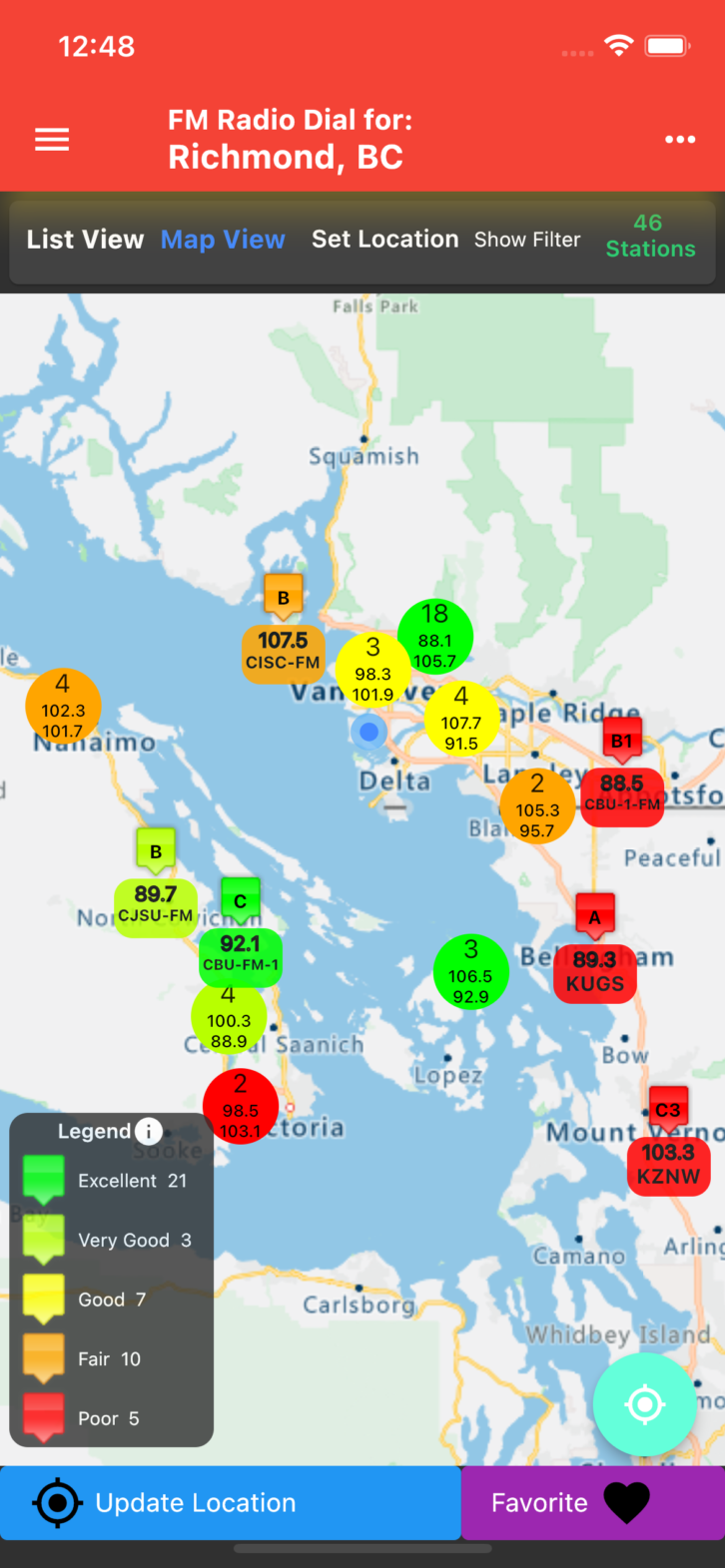
RW: What data is it pulling from, and how do you develop the signal strength information?
Langan: Mark Colombo, an FCC engineer and the proprietor of RabbitEars.Info, the TV model for RadioLand, has been an immense help in amassing the data sources.
RadioLand pulls in updated copies of the FCC database each night, and Canada’s FM database through ISED as it is updated, and that is the technical data for the stations you see. Format and slogan data, along with station data from all other areas, is via the WTFDA’s FM database. The WTFDA is the DX hobbyist group I am a member of.
Mark provided a method to produce signal strength predictions using the Longley-Rice propagation model, developed in the 1960s and still widely used. The tests we’ve conducted show how it shines in a variety of areas where extrapolating contour data, for example, can be error-prone.
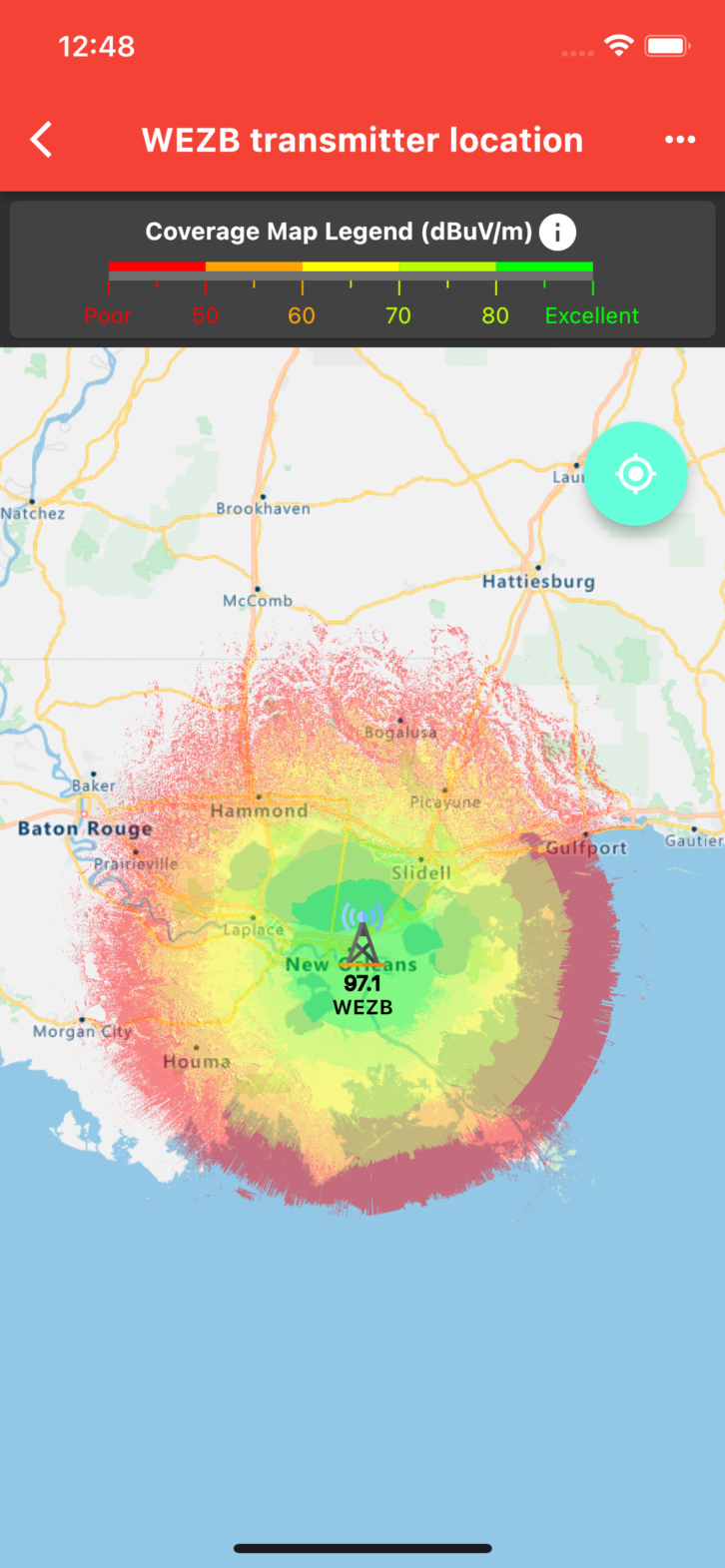
As any engineer could probably speak to, Longley-Rice is not perfect. I wrote a 300+ page thesis paper taking a look at some of its strengths and weaknesses, but I feel its predictions are as good as any model I’ve seen for FM broadcast.
A distinguishing factor is that we are also factoring in station directional patterns, through the field values published by the FCC and ISED, for U.S. and Canadian FM stations. So the predictions you see in RadioLand consider if 105.9 WMAL-FM, for example, is only sending 30% of their power toward your azimuth. Accuracy had to be the number one consideration, and the directional pattern data has helped ensure it.
Perhaps Mark’s biggest contribution is the Longley-Rice coverage map overlays that are available for a majority of U.S. FM stations, which he had generated on the side for RabbitEars.Info. The overlays look beautiful in the app.
From what I gather, people are impressed with the accuracy of the Longley-Rice-based predictions. It’s done a great job highlighting some of the more mysterious, but obviously terrain-based, sweet spots for FM signals. Here in South Jersey, I’ve never quite been able to understand why the stations from the Lehigh Valley and Reading areas get in so well on a variety of receivers. The contour extrapolations do not account for this. Longley-Rice, and subsequently RadioLand, does, likely due to the nature of the signals propagating downward to the coastal plain.
What makes me happiest is hearing casual listeners describe the app as easy to use and delivering lots of good information.
RW: What else should we know?
Langan: I spent part of the past summer making some small additions, including matching the FM listings to the top 253 Nielsen FM markets and having a section where you can search by Nielsen markets. We also cataloged each Major League Baseball and National Football league FM broadcast affiliate, which was a complex data gathering process. I’m open to any idea for a feature and encourage anyone to contact me at nlanga01@villanova.edu for comments.
My next project is finding a data source for streaming links for the stations in the app and I hope to make progress on that soon.
